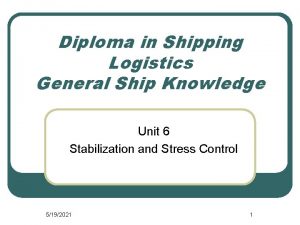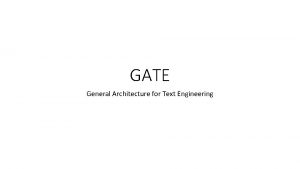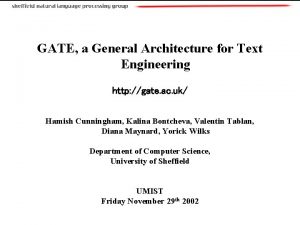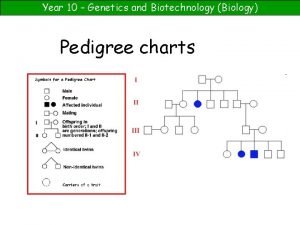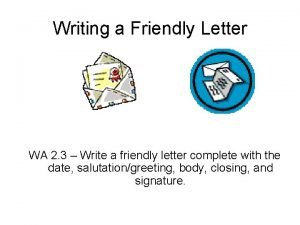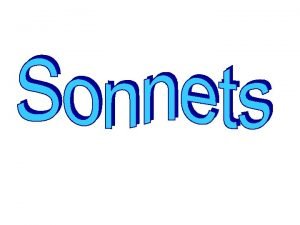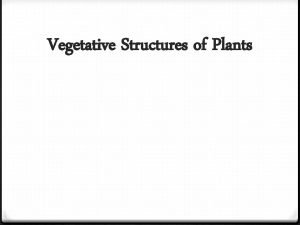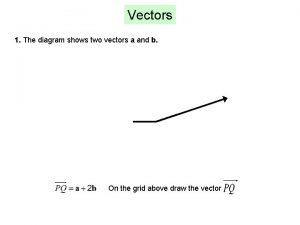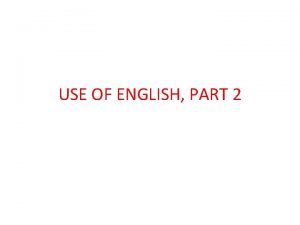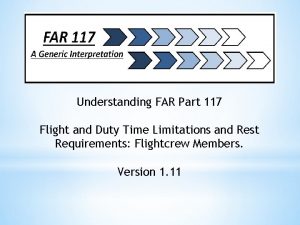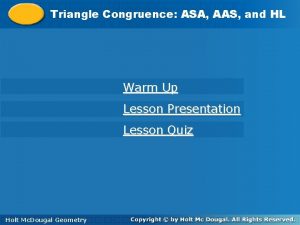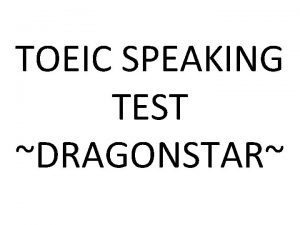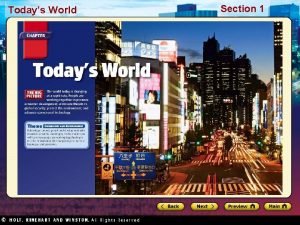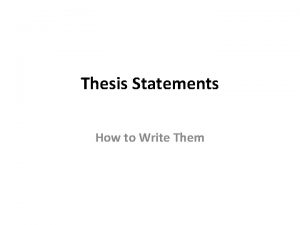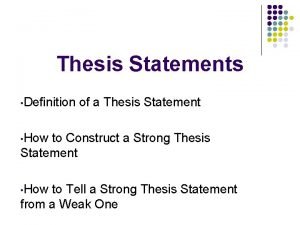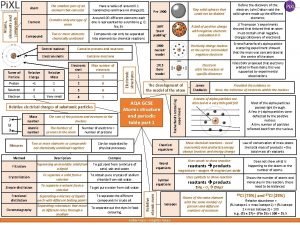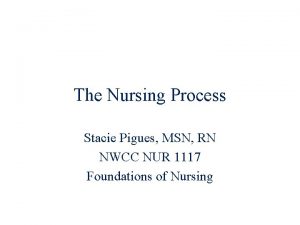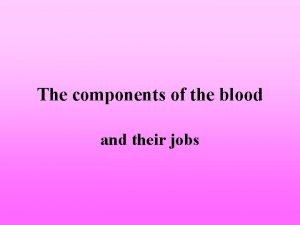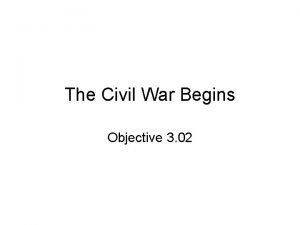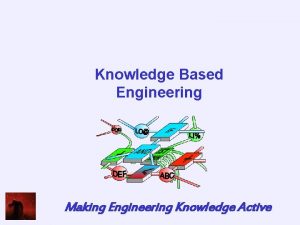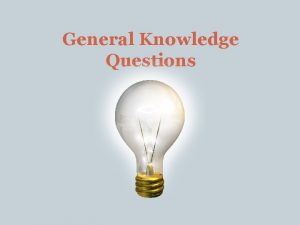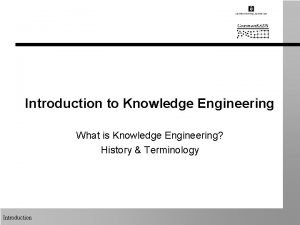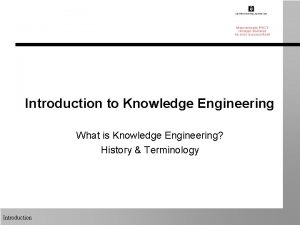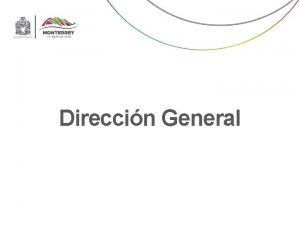General Engineering Knowledge General Engineering Knowledge Part 1













































































- Slides: 77

General Engineering Knowledge

General Engineering Knowledge Part 1 Construction Materials

Construction Materials • Most commercial vessels, and a lot of their equipment, are constructed of iron and it’s alloys. • Other common materials found onboard include aluminium, copper and it’s alloys, plastics, and resins

Iron • Iron is the most abundant element found on Earth. • Iron accounts for roughly 95% of all worldwide metal production. • Iron is: – Relatively cheap – Relatively strong – Relatively soft • Iron is usually alloyed with one or more other elements to improve it’s working properties.

Cast Iron • Cast Iron is an alloy containing between 2~4% Carbon, and 1~4% Silicon. • Cast Iron: – – – Tends to be brittle Has a low melting point Has good fluidity and castability Has excellent machinability Has excellent resistance to wear and deformation • Cast Iron is often used for: – Engine blocks and heads – Pump and valve bodies • Because of the relatively high Carbon content, Cast Iron is difficult to weld.

(Carbon) Steel • Steel is an Iron alloy containing up to 2% Carbon. • The higher the Carbon content, the harder and more brittle the Steel becomes. • Carbon content: – – – 0. 05~0. 15% - Low Carbon Steel – Nails, pipe, rivets, stampings 0. 16~0. 29% - Mild Carbon Steel – Structural & machine parts 0. 30~0. 59% - Medium Carbon Steel – Gears, shafts, axles 0. 60~0. 99% - High Carbon Steel – Tools, springs 1~2% - Ultra High Carbon Steel – Drills, knives, saws, files • Steel may also contain small amounts of manganese, silicon, and copper.

Stainless Steel • Stainless Steel is an Iron alloy containing at least 10% Chromium – 18% is common. • Most Stainless Steels contain between 0. 05% and 0. 15% Carbon. • Most Stainless Steels contain between 5% and 20% Nickel. • Stainless Steel is available in different series. The 300 series accounts for over 70% of Stainless Steel production. • Most Stainless Steel found on ships is either: – 304 - 18% Cr, 8% Ni (sometimes called 18/8 or 18 -8) – 316 - 18% Cr, 10% Ni (sometimes called 18/10 or 18 -10) • Stainless Steel does oxidize (rust), but when it does the Chromium content forms a thin passivation layer of Chromium Oxide which protects the rest of the material from oxidizing further. • Nickel assists in the formation of the passivation layer – higher nickel alloys are used in environments with lower oxygen contents (ie: underwater).

Non-Ferrous Metals • Non-Ferrous Metals do not contain an appreciable amount of Iron. • Some common Non-Ferrous Metals found aboard include: – Copper – Aluminium – Zinc

Copper • Copper is a corrosion resistant, ductile (soft) element that has high thermal and electrical conductivity. • Copper oxidizes in air and forms a protective layer of Copper Oxide which protects the rest of the material. • Copper is often used for fuel and water lines aboard ships, due to its corrosion resistance. • Electrical wiring is made of Copper, due to its high electrical conductivity. • Copper is often alloyed with other elements to create Brass and Bronze. • Excessive levels of Copper are toxic. Copper is a common ingredient in anti-fouling paint, and it became popular in the 16 th century to cover the hulls of wooden ships in copper plating in order to reduce marine growth.

Brass • Brass is a Copper alloy that usually contains 30~40% Zinc (Zn). • Brass is stronger and harder then pure Copper. • Some common Brasses include: – Yellow Brass - 35% Zn - Most common, general hardware and decoration – Naval Brass - 39% Zn, 1% Sn - Stronger, greater corrosion resistance – Muntz Metal - 40% Zn - Greater corrosion resistance, – Free-Cutting Brass - 35% Zn, 2% Pb - Gears, screws, bolts – Red Brass - 5% Zn, 5% Sn, 5% Pb - Castings – Aluminium Brass - 30% Zn, 2% Al – extremely corrosion resistant, heat exhangers, condensor tubing

Bronze • Bronze is a Copper alloy that usually contains 10~20% Tin (Sn). • Bronze is extremely hard and very corrosion resistant. • Bronze has excellent low-friction properties, and is often used for bearings. • One common type is Phosphor Bronze, which contains 10% Sn & 1% P. Phosphor Bronze is often used to make propellers and shafts.

Nickel • Nickel is often alloyed with Copper. • Cupronickel is an alloy that usually contains 25~50% Nickel (Ni). – Cupronickel’s electrical potential is neutral in regards to seawater, and therefore it is extremely corrosion resistant in a marine environment. – Cupronickel often contains trace amounts of Manganese or Iron to strengthen it. – Cupronickel is often used for heat exchangers and valves. • Monel is an alloy that usually contains 50~75% Nickel. – Monel is one of the most corrosion resistant metals available, excluding precious metals (Platinum, Gold, Silver…). – Monel often contains trace amounts of Iron or Titanium to strengthen it. – Monel is often used to heat exchangers, valves and pump shafts in corrosive environments, as well as keel bolts on wooden or fiberglass boats.

Aluminium • Aluminium is a soft, durable and lightweight metal. • Aluminium oxidizes in air and forms a protective layer of Aluminium Oxide which protects the rest of the material. • Aluminium has roughly 1/3 rd of the weight and stiffness of steel. • Aluminium can be easily machined, cast, and extruded. • Although fairly corrosion resistant on its own, Aluminium can be very prone to galvanic corrosion when it is in electrical contact with a second metal. • Aluminium is often used for hulls and superstructures on ships where weight is a concern, as well as hatches, ladders, and railings.

Zinc • Zinc is not useful as a structural material due to its low strength and low melting temperature. • Zinc has two main marine applications: – Galvanization – Iron or Steel is coated with Zinc to form a barrier that will protect it from corrosion. – Sacrificial Anodes – Zinc ingots are attached to other metals to protect them from galvanic corrosion. The Zinc is slowly eaten away, and must be replaced periodically. • As previously mentioned, Zinc is often alloyed with Copper to make Brass.

Plastics and Resins • Most Plastics and Resins are cheap, relatively strong, and extremely corrosion resistant. • Some smaller boats have hulls and/or superstructures made of Plastics and Resins. • Due to their low-friction properties, some Plastics and Resins are used as low speed bearings on propeller and rudder shafts.

Corrosion • Corrosion means the breaking down of essential properties in a material due to chemical reactions with its surroundings. • Corrosion can be concentrated locally to form a pit or crack, or it can extend across a wide area to produce general deterioration. • Two common kinds of corrosion in the marine environment include: – Passivation Corrosion: occurs when the oxide layer protecting the base metal (such as Copper, Stainless Steel, and Aluminium) is scratched or otherwise damaged. This typically creates a pit or crack. – Galvanic Corrosion: is an electrochemical process in which one metal corrodes preferentially when in electrical contact with a different type of metal, and both metals are immersed in an electrolyte (such as water). This typically creates general surface deterioration

Galvanic Series • Nobel (cathodic) – – – – – Platinum Gold Graphite Titanium Silver Stainless steels Nickel Monel Cupronickel Bronze Brass Copper Cast iron Steel Aluminium Zinc Magnesium • Active (Anodic) • When two dissimilar metals in electrical contact are placed in an electrolyte, the metal which is lower on this list will corrode preferentially. • The farther apart the two metals are, the higher the risk of galvanic corrosion.

Preventing Corrosion • Corrosion can be prevented by: – Forming a barrier coating (such as paint) to protect the metal from the environment – Using sacrificial anodes of Zinc or Magnesium which will corrode preferentially • Eliminating any stray electrical currents will help reduce corrosion. • Using dissimilar metals should be avoided whenever possible.

General Engineering Knowledge Part 2 Fire Hazards

Fire Hazards • Classes of Fires: – “A” – “Ashes” – ordinary combustibles such as wood, cloth, and rubber. – “B” – “Barrels of Oil” – flammable liquid or gaseous fuels such as diesel or propane. – “C” – “Conductivity” – fires involving potentially live electrical equipment, such as short-circuiting machinery or overloaded electrical cables. – “D” – fires involving burning metals, such as magnesium flares.

Flash Point • The flash point of a flammable liquid is the lowest temperature at which it can form an ignitable mixture in air. At this temperature the vapour may cease to burn when the source of ignition is removed. • The fire point, a slightly higher temperature then the flash point, is defined as the temperature at which the vapour continues to burn after being ignited. • The auto-ignition temperature of a substance is the lowest temperature at which it will spontaneously ignite in a normal atmosphere without an external source of ignition, such as a flame or spark.

Flash Points of Common Fuels • Fuel – Flash point (auto-ignition temp) – Gasoline − 40°C (246°C) – Diesel 62°C (210°C) – Kerosene 72°C (220°C) • Because Diesel has a considerably higher flashpoint then Gasoline, Diesel is the preferred fuel for use onboard ships.

Spontaneous Combustion • Spontaneous Combustion is a type of combustion which occurs without an external ignition source. • How Spontaneous Combustion occurs: 1. A substance with a relatively low ignition temperature begins to release heat, which may occur in several ways, such as oxidation or fermentation. 2. The heat is unable to escape, and the temperature of the material rises. 3. The temperature of the material rises above its ignition point. 4. Combustion begins, if sufficient oxygen is present. • The most common example of spontaneous combustion is a pile of oily rags left in the corner. The oil oxidizes, creating heat. If the heat is unable to dissipate, the rags will start to burn.

Heat Shields and Lagging • Heat Shields and Lagging are placed on hot surfaces such as exhaust piping in order to: – Protect personnel from burns. – In the event of a flammable fluid leak or spill, to stop the fluid from coming into contact with a hot surface and igniting. • High pressure fuel lines on engines are often doubled. If the inner fuel line should burst, the fuel is contained in the outer line and allowed to run off to a safe location.

Flammable Material Storage • Flammable Materials such as paint, thinner, oils, and greases should be stored in a dedicated non-combustible locker that is not located in an accommodation or machinery space. • A smoke alarm should be fitted in this space.

Fuel Tank Vents • Fuel tank vents normally terminate on the weather deck. • Shutoff valves are fitted at the termination point, as well as a fire screen (a fine gauge wire mesh to prevent the entry of flames into the tank).

Engine Room Fire Prevention • The engine room should be kept as clean as possible in order to reduce the chance of fire. • All machinery and systems should be inspected regularly for leaks or damage. • The engine room bilge should be kept free of fuel and oil. • Garbage such as oily rags or used filters should be disposed of properly.

Re-Fuelling (Bunkering) Operations • All pumps and hoses should be approved for the product being transferred. • An effective method of communication must be established so that the flow of fuel can be stopped immediately if needed. • Scuppers and Freeing Ports should be plugged so that any spill can be contained. • All sources of ignition in the vicinity, such as cigarettes or naked lights, should be extinguished.

Fire Hazards • List ten common stores found onboard that may create a fire hazard. • How could the risk of fire be reduced? • If a fire were to develop, how could it be fought?

Structural Fire Protection • Divisions: – “A” – A stiffened bulkhead or deck capable of preventing the passage of smoke and flame when subjected to the standard fire test for a period of 60 minutes. – “B” – A division formed by a bulkhead, ceiling or lining that is constructed so as to be capable of preventing the passage of flame when subjected to the standard fire test for 30 minutes. – “C” – A division that is constructed of non-combustible materials. • Insulation: – “-60” – Insulation that will prevent the opposite face from reaching an average temperature greater then 150°C for 60 minutes. – “-30” – Insulation that will prevent the opposite face from reaching an average temperature greater then 150°C for 30 minutes. – “-15” – Insulation that will prevent the opposite face from reaching an average temperature greater then 150°C for 15 minutes. – “-0” – No insulation • Examples: – “A-60” – Deckhead on a passenger vessel. – “B-15” – Crew cabin door on a cargo vessel.

Fire Doors • Fire doors are fitted onboard ships to stop or slow the spread of fire, heat, and smoke. • Guides, bearings, hinges, latches, pulleys and other moving parts should be lubricated regularly. • Seals should be checked regularly. • Automatically closing fire doors can be closed locally, from the bridge, or by the activation of the fire alarm system. They should be checked regularly for correct operation.

Watertight and Weathertight • Watertight: – Designed and constructed to withstand a static head of water without any leakage. – Refers to structures that must withstand hydrostatic loading for extended periods of time, including the hull bottom and sides, main deck plating, tanks, and bulkheads. • Weathertight: – Water will not penetrate in any sea condition. – Refers generally to topside structures subject to occasional and short exposure to water on deck, from boarding waves or wind driven rain and spray. • In short, the watertight portions of a hull generally keep water out from below, and the weathertight portions of a structure generally keep it out from above.

Watertight Doors • Watertight doors are fitted in bulkheads or in the hull, to allow passage of personnel and equipment. • Guides, bearings, hinges, latches, pulleys and other moving parts should be lubricated, and seals should be checked regularly. • On some vessels the watertight doors are capable of being operated both locally and remotely (usually from the bridge). Audio & visual alarms are fitted at each door to indicate that it is about to close. Instrumentation is fitted on the bridge to indicate: – In which position the door is supposed to be. – In which position the door currently is. – Other faults such as power failures. • Care should be taken not to linger in watertight door openings, and to not leave any objects where they may block a watertight door from closing correctly.

Fire (Vent) Dampers • Fire dampers are normally fitted on the weather deck. • Fire dampers are used to close vents and ducts in the event of a fire. • Fire dampers should be lubricated and checked for properation regularly.

Fire Alarm Systems • Fixed Fire Alarm Systems normally use two kinds of detectors: – Smoke detectors • Usually found in accommodation spaces • Tested by using “fake smoke” – Heat detectors • Usually found in areas such as engine rooms and galleys where a small amount of smoke is common and would create false alarms. • Tested by using a heat gun • The normal alarm used to indicate a fire is a continuous ringing of the alarm bells.

Fire Smothering Systems • Fire smothering systems are fitted in engine rooms, and in some galleys. • Smothering systems are fitted with an alarm that sounds before the smothering agent is dumped. Most alarms are comprised of a siren that is driven by the dumped agent itself. On hearing the alarm all personnel should immediately vacate the compartment. • The activation point for a fire smothering system is located outside the compartment protected, often on the bridge. • Only the Captain has the authority to activate the system (or have it activated). • If possible, before activation: – – The area should be cleared of personnel Machinery in the compartment should be stopped Ventilation systems should be shut down Fire dampers should be closed

Sprinkler Systems • On some vessels sprinkler systems are used to protect accommodation and control spaces. • Sprinkler systems may be: – Automatic – The system is kept pressurized. When a sprinkler head is heated above a certain temperature it opens and water is sprayed out. – Manual – Sprinkler heads are installed and connected to the fire line through a manifold. To sprinkle a compartment the fire pump is started, and the valve to the desired compartment is opened. • Pumps should be checked regularly for correct operation and pressure.

Engine Room Escapes • Every manned engine room must have at least two exits, and at least one must lead directly to the weather deck. • The exits should be located, as far as practical, at opposite ends of the engine room. • Engine room escapes should be kept clear at all times.

Emergency Shutoffs • Fuel tanks (including day-tanks) must be fitted with a quick-closing valve, with a remote pull located outside the engine room. Alternatively, valves with extended spindles which extend to an upper deck may be fitted. • Engines (propulsion, gensets, etc) should be fitted with remote shutdowns that will allow them to be stopped in case of emergency. • Bilge and transfer pumps should be fitted with remote shutdowns that will allow them to be stopped by a member of the deck crew if they detect any pollutant being discharged.

Fire Mains • The fire main is a network of pipes that connects the fire pumps and the fire hoses. • Main fire pumps are normally found in the engine room. • Most ships also have at least one fire pump outside the engine room that can be used in the event of an engine room fire.

General Engineering Knowledge Part 3 Safe Working Practices

Safe Working Practices: WHMIS • WHMIS: Workplace Hazardous Materials Information System • WHMIS is Canada's national hazard communication standard. • The key elements of the system are: 1. Cautionary labeling of containers of WHMIS “controlled products”. 2. The provision of material safety data sheets (MSDSs). 3. Worker education and training programs.

Safe Working Practices: Canada Labour Code • Part II of the Canada Labour Code relates to occupational health and safety and reflects the desire to reduce work place injuries and accidents in federal jurisdiction. • Three Basic Rights: – Right to Know – Right to Participate – Right to Refuse

Personal Protective Equipment • Some common personal protective equipment worn in the engine room includes: – Eye protection – Ear protection – Head protection – Foot protection – Skin protection – Hand protection

Rotating Machinery • Be very careful when working in the vicinity of rotating machinery. • Do not wear loose clothing. • Remove all jewellery. • Tie back long hair.

General Engine Room Safety • Keep the engine room clean. Grease on the deck may cause a fall. Tools lying around may cause a trip. • Keep up with simple routine maintenance. Inoperative light fixtures will reduce the ambient light level. • Fix small problems before they develop into large problems. • Make sure all safety guards are in their correct place. • Make sure all safety equipment is in its place and functioning correctly.

Machinery Maintenance • Before performing maintenance on any machinery: – Notify your co-workers that you will be performing the maintenance. – Lock out the start circuit (remove key, disconnect start battery). – Make sure that any and all pressure systems on the machinery are bled off before working on them. – Make sure that electrical power has been disconnected and capacitors discharged before working on electrical components. • The Manufacturer’s manual should be consulted when performing maintenance on any machinery because it will contain important safety information.

Hot Work (Welding, Cutting) • When performing hot work: – The area should be clean and free of any flammable material. – Fire fighting equipment should be close at hand. – A fire watch should be posted, not only in the compartment where the hot work is being performed, but also on the opposite sides of any bulkheads, decks, etc that are being worked on or near. – The fire watch should continue for a minimum of 1 hour after the hot work is finished.

Lifting Equipment • Lifting equipment should be inspected before use. • Look for: – – – Corrosion Cracking Elongation Deformation Broken strands or fibres • Never place any part of your body under an object that has been lifted unless the object has been blocked and/or secured.

Confined Spaces • Generally speaking, a confined space is an enclosed or partially enclosed space that: – is not primarily designed or intended for human occupancy – has a restricted entrance or exit by way of location, size or means – Can represent a risk for the health and safety of anyone who enters, due to one or more of the following factors: • • its design, construction, location or atmosphere the materials or substances in it work activities being carried out in it, or the mechanical, process and safety hazards present • Before entering into a confined space: – – Have a spotter watch you Wear proper personal protection Have the atmosphere tested Make sure any and all safety equipment is on site.

General Engineering Knowledge Part 4 Pollution Prevention

Regulations for the Prevention of Pollution from Ships and for Dangerous Chemicals • Part of the Canadian Shipping Act • Types of pollution: – Oil – Noxious Liquid Substances and Dangerous Chemicals – Sewage – Garbage – Air – Anti-Fouling Systems

Pollution Prevention Terms • ppm: parts per million, by volume. • Garbage: all kinds of victual, domestic and operational waste that are generated during the normal operation of a ship and are liable to be disposed of continuously or periodically, excluding fresh fish and any of their parts. This definition includes plastics, dunnage, lining and packing materials, food wastes and refuse such as paper products, rags, glass, metal, bottles, crockery, incinerator ash and cargo residues. • Sludge: sludge from the fuel or lubricating oil separators, waste lubricating oil from main or auxiliary machinery, or waste oil from bilge water separators, oil filtering equipment or drip trays. • Oily substance: a substance with any oil content. • Sewage: – human body wastes and wastes from other living animals; – drainage and other wastes from toilets and other receptacles intended to receive or retain human body wastes; – drainage from medical premises such as a dispensary or a sick bay via wash basins, wash tubs and scuppers located in such premises; – drainage from spaces containing living animals. • Transfer operation: the loading or unloading of oil, an oily mixture, a noxious liquid substance or a dangerous chemical to or from a ship, a loading facility, or another ship; or

Re-Fuelling (Bunkering) Operations • All pumps and hoses should be approved for the product being transferred. • An effective method of communication must be established so that the flow of fuel can be stopped immediately if needed. • Scuppers and Freeing Ports should be plugged so that any spill can be contained. • All sources of ignition in the vicinity, such as cigarettes or naked lights, should be extinguished.

Oil Record Book • Carried by ships >400 GT (and tankers >150 GT) • To be filled out when: – Ballasting or cleaning fuel tanks – Discharging dirty ballast or cleaning water from fuel tanks – Disposing oily residues and sludge – Discharging overboard bilge water which has accumulated in machinery spaces • To include: – – Which tank/bilge Substance that was discharged or disposed of Quantity of substance discharged or disposed of Ship’s position

Emergency Polluting • A Vessel is permitted to discharge a pollutant when: – a discharge is necessary for the purpose of saving lives, securing the safety of a ship or preventing the immediate loss of a ship; – a discharge occurs as a result of an accident of navigation in which a ship or its equipment is damaged, unless the accident occurs as a result of an action that is outside the ordinary practice of seamen; – minimal and unavoidable leakage of oil occurs as a result of the operation of an underwater machinery component; – a discharge is made for the purpose of scientific research into pollution abatement or control in accordance with permission granted by the Minister; – an accidental loss of synthetic fishing nets occurs, provided that all reasonable precautions were taken to prevent the loss; – a discharge of garbage results from damage to a ship or its equipment, provided all reasonable precautions have been taken before and after the occurrence of the damage to prevent or minimize the discharge; – an emission involving pollution of the air results from damage to a ship or its equipment, provided all reasonable precautions have been taken before and after the occurrence of the damage to prevent or minimize the emission

Oily-Water Separators • An oily-water separator (OWS) is a piece of shipboard equipment that allows a vessel's crew to separate oil from bilge water before it is discharged overboard. • The water discharged from an OWS must contain less then 5 ppm oil. • OWS’s contain an alarm and automatic shutdown that will stop the discharge of water should the concentration of oil exceed 5 ppm.

Shipboard Oil Pollution Emergency Plan (SOPEP) • Required for ships >400 GT (and tankers >150 GT) • Provide guidance to the Master and officers on board the ship with respect to the steps to be taken when a pollution incident has occurred or is likely to occur. • Includes contact information for all relevant personnel and agencies.

Whom to Contact in case of Pollution 1. 2. 3. 4. 5. 6. 7. Watch Officer Captain Office Canadian Coast Guard Transport Canada Marine Safety Port Authority (if applicable) Environment Canada

General Engineering Knowledge Part 6 Hydraulic Systems

Hydraulic Systems • Hydraulic systems use pressurized liquid to do work. • They can be powered by hand, or with a motor or engine. • In closed hydraulic circuits the fluid is returned directly to the pump inlet after making it’s way through the circuit. Pumps in these circuits usually turn on and off as required. Reversible pumps are often used, negating the need for valves. • In open hydraulic circuits the fluid is returned to a reservoir tank, which the pump suction is also attached to. Pumps in these circuits usually run continuously, and always in the same direction.

Hydraulic System Valves • All hydraulic systems should contain a pressure relief valve, to protect components from over-pressurization. • Spool valves are often used in hydraulic systems to allow the hydraulic circuit to be easily reversed.

Hydraulic System Oil • The most common liquid used in hydraulic systems is oil, due to it’s anti-corrosion and lubrication properties. • Hydraulic oils are available in different viscosities, for use in different types of systems and in different temperatures. • It is very important to keep hydraulic oil clean and free of water in order to prevent corrosion, wear, and jamming of components. • Most hydraulic systems contain filters, and some contain tank heaters to stop water from condensing in the reservoirs. • If air enters a hydraulic system it will make the controls feel “spongy” or “mushy”, because of it’s compressible nature. The air must be bled out to prevent erratic operation, and to prevent damage to system components due to cavitation.

Hydraulic System Safety • Hydraulic systems can contain liquids compressed to pressures exceeding 5000 psi. • In systems operating a high pressures, a small leak can produce a small “jet” of liquid that can easily cut flesh and bone. • Due to both friction and compression, hydraulic systems will produce heat. Many systems will have a cooler. • Excessive heat indicates a problem with the system. • A change in sound or vibration may also indicate a problem with a hydraulic system. • When filling a hydraulic tank or reservoir, enough room should be left at the top to allow for the liquid to expand as it warms up.

General Engineering Knowledge Part 7 Pneumatic Systems

Pneumatic Systems • Pneumatic systems use pressurized gas to do work. • They are usually powered with a motor or engine, but can also be powered by hand. • Almost all pneumatic circuits use air, and are designed as open circuits. Air from the atmosphere is compressed, used in the circuit, and then released back to the atmosphere. • Air receivers are used to store pressurized air.

Air Compressors • Most air compressors are a piston design. They operate using the same basic principles as a piston engine. On the down-stroke the intake valve is open, and air is drawn into the cylinder. On the upstroke the exhaust valve is open and the piston pushes the air out into the pneumatic circuit. • Like piston engines, piston air compressors usually have lubrication and cooling systems that must be checked and maintained regularly. • Most air compressors use a pressure switch to start and stop automatically in order to maintain the air pressure in a desired range. • Excessive running, or cycling of an air compressor is usually caused by a leak or a faulty pressure switch. • Many air compressors are fitted with an intercooler to reduce the temperature of the compressed air exiting the compressor. • Many air compressors are equipped with un-loaders to make them easier to start. Un-loaders may also be used to stop the air compressor from compressing air, without stopping the air compressor itself.

Air Receivers • All air receivers are fitted with pressure relief valves. • Because the atmosphere always contains some water vapour, this is introduced into the circuit by the air compressor. This water vapour will cool and condense in the air receiver, and must be drained off regularly. • The maximum operating pressure for an air receiver can be found on a plate attached to the receiver.

General Engineering Knowledge Part 8 Watch Keeping Procedures

Contact With Home Base • Vessels with Small Vessel Machinery Operators (SVMOs) are required to have continual communications available with the home base of operations. • The home base should be contacted immediately whenever a system or piece of machinery fails, or is operating outside of it’s design limits.

Pre-Departure Checks • Before departure, the SVMO should make a predeparture check that includes: – Consumables (fuel, oil, water, etc) – Spares (filters, belts, impellors, etc) – Condition of equipment (machinery, battery chargers, etc) – Condition and availability of safety equipment (personal protection, 1 st Aid kit, fire fighting equipment) – Bilge levels – The engine room logbook (previous problems and trends)

Post-Departure Machinery Checks • While underway, the SVMO should monitor: – All equipment being used (temperatures, pressures, voltages, etc) – Consumable levels (fuel, oil, water, etc) – Bilge levels – Leaks (water, oil, fuel, etc)

Engine Room Logbook • An engine room logbook is used to record incidents and maintenance as well as operating pressures, temperatures, voltages, etc in order to identify trends. • All incidents should be reported to the Captain and home base immediately.

General Knowledge • The amount of fuel in a tank is usually measured with a dip-stick or a sight-glass. • Fuel can be checked for water contamination by taking a small sample from the sludge drain. • Common locations for starting and stopping engine room machinery include locally, the control room, and the bridge. • Deck plates and walkways should always be kept secured and clean. • Excessive water in the bilges may reduce stability due to the free surface effect and should be pumped out after making sure it does not contain pollutants. • If you suspect the vessel has touched bottom immediately inform the bridge, close all watertight doors and hatches, and check the engine room for damage/leaks. • Watertight door and hatches should be kept closed when not in use while the vessel is underway.

Situations #1 • Fire in the engine room: – Inform the bridge. – Attempt to extinguish the fire. – If attempts to extinguish the fire are unsuccessful, inform the captain that you feel it may be necessary to use the smothering system. • Unexpected main engine shut-down: – Inform the bridge. – Attempt to determine the cause of the shut-down, check all fluids and levels. – Attempt to re-start the engine. • Loss of wheelhouse engine control: – Inform the bridge. – Prepare the engine and transmission for local control.

Situations #2 • Low main engine oil pressure alarm: – Inform the bridge. – Check oil pressure gauge. • If low request permission to reduce speed/load. • If nil request permission to stop engine. – Check oil level with dip-stick. – Check for leaks. • High main engine jacket temperature: – – Inform the bridge. Request permission to reduce speed/load. Check water flow from cooling pump(s). Check thermostat operation.

Situations #3 • Low main engine cooling water level: – Inform the bridge. – Request permission to reduce speed/load. – Top up engine cooling water level and continue to monitor. – Check for leaks. • High engine room bilge alarm: – Inform the bridge. – Visually check bilge level. – Pump out engine room bilge, and continue to monitor.
 Part part whole addition
Part part whole addition Unit ratio definition
Unit ratio definition Brainpop ratios
Brainpop ratios Technical description
Technical description Parts of the front bar
Parts of the front bar The phase of the moon you see depends on ______.
The phase of the moon you see depends on ______. Minitab adalah
Minitab adalah Acquiring spiritual knowledge part 1
Acquiring spiritual knowledge part 1 How to acquire spiritual knowledge
How to acquire spiritual knowledge Shared knowledge vs personal knowledge
Shared knowledge vs personal knowledge Knowledge shared is knowledge squared
Knowledge shared is knowledge squared Knowledge shared is knowledge multiplied meaning
Knowledge shared is knowledge multiplied meaning Knowledge creation and knowledge architecture
Knowledge creation and knowledge architecture Contoh shallow knowledge dan deep knowledge
Contoh shallow knowledge dan deep knowledge A posteriori
A posteriori Street smarts vs book smarts
Street smarts vs book smarts Knowledge claim
Knowledge claim Gertler econ
Gertler econ General knowledge quiz 2015
General knowledge quiz 2015 Jeopardy general knowledge
Jeopardy general knowledge General knowledge quiz 2016
General knowledge quiz 2016 Htl hightail
Htl hightail General shipping knowledge
General shipping knowledge Usa general knowledge
Usa general knowledge The fbla-pbl national center is located where
The fbla-pbl national center is located where Easter quiz 2020
Easter quiz 2020 Generalized modus ponens
Generalized modus ponens Planos en cinematografia
Planos en cinematografia Where did general lee surrender to general grant?
Where did general lee surrender to general grant? Gate general architecture for text engineering
Gate general architecture for text engineering General architecture for text engineering
General architecture for text engineering General architecture for text engineering
General architecture for text engineering What is system design in software engineering
What is system design in software engineering Forward engineering in software engineering
Forward engineering in software engineering Dicapine
Dicapine Elegant systems
Elegant systems Forward and reverse engineering
Forward and reverse engineering Proto 5hema
Proto 5hema Pedigree diagram
Pedigree diagram Cambridge letter writing format
Cambridge letter writing format It is the star to every wand'ring bark meaning
It is the star to every wand'ring bark meaning The highest part of a wave
The highest part of a wave What kind of wave is created if a tree falls in a forest?
What kind of wave is created if a tree falls in a forest? What are the main parts of flowering plants
What are the main parts of flowering plants Oabc is a parallelogram p is the point on ac
Oabc is a parallelogram p is the point on ac Part 2 use of english
Part 2 use of english The odyssey and epic poetry an introduction part 1
The odyssey and epic poetry an introduction part 1 Four part processing model for word recognition
Four part processing model for word recognition Far 117 table b
Far 117 table b Triangle congruence by asa and aas quiz part 1
Triangle congruence by asa and aas quiz part 1 Toeic speaking part 1
Toeic speaking part 1 The world today part 1
The world today part 1 To kill a mockingbird quiz part 1
To kill a mockingbird quiz part 1 To kill a mockingbird study guide answer key chapters 1-3
To kill a mockingbird study guide answer key chapters 1-3 To kill a mockingbird chapter 1 analysis
To kill a mockingbird chapter 1 analysis How to cite part of a sentence
How to cite part of a sentence Three dimensional figures definition
Three dimensional figures definition Thesis statement limited subject example
Thesis statement limited subject example Part of thesis
Part of thesis Themes in the absolutely-true-diary-part-time-indian
Themes in the absolutely-true-diary-part-time-indian The tragedy of julius caesar, part 4: monologues
The tragedy of julius caesar, part 4: monologues Smallest non metal
Smallest non metal The curved part of head with mechanism for needle operation
The curved part of head with mechanism for needle operation The selfish giant plot diagram
The selfish giant plot diagram Figurative language in the rime of the ancient mariner
Figurative language in the rime of the ancient mariner Membranes of larynx
Membranes of larynx Baalzephon
Baalzephon Tina ordered a replacement part for her desk
Tina ordered a replacement part for her desk The odyssey vocabulary part 1
The odyssey vocabulary part 1 Who was homer
Who was homer Nwcc nursing
Nwcc nursing Nursing care plan example
Nursing care plan example Newest part of the brain
Newest part of the brain Epic hero meaning
Epic hero meaning The comparative relationship of one part to another
The comparative relationship of one part to another Compare and contrast the crust mantle and core
Compare and contrast the crust mantle and core Component of blood
Component of blood William tecumseh sherman total war
William tecumseh sherman total war






















